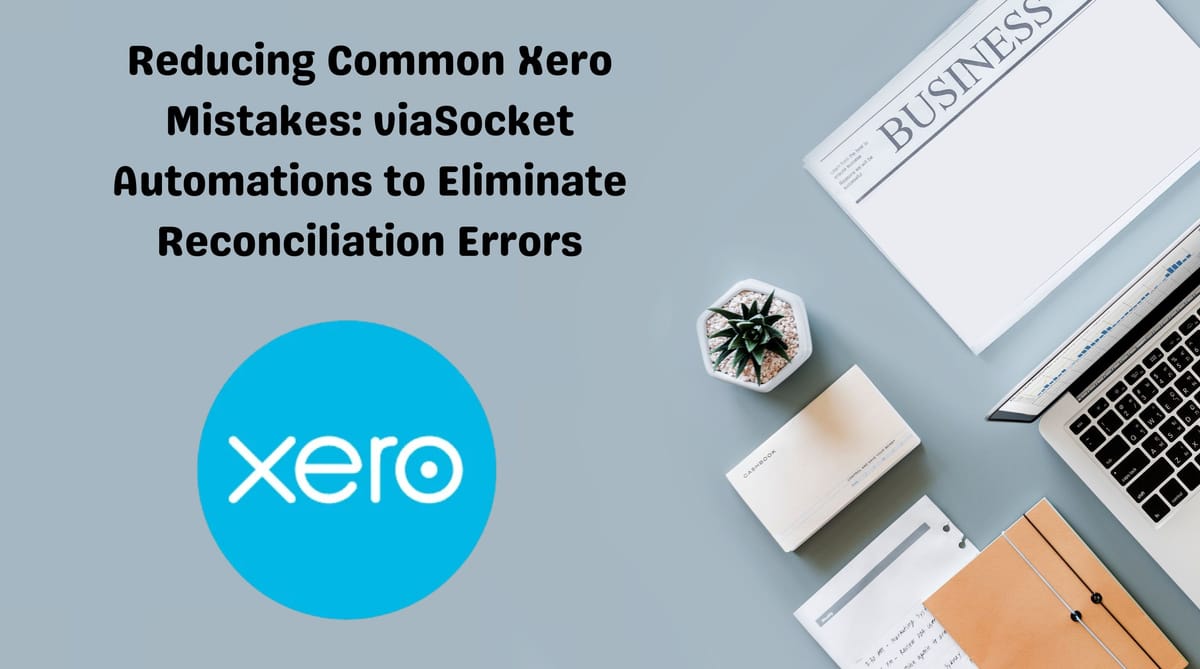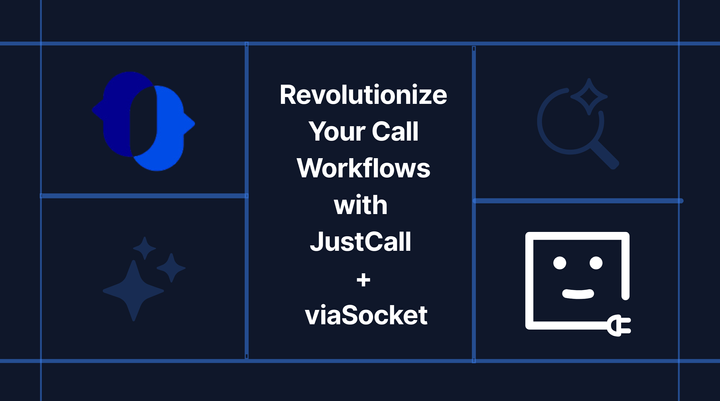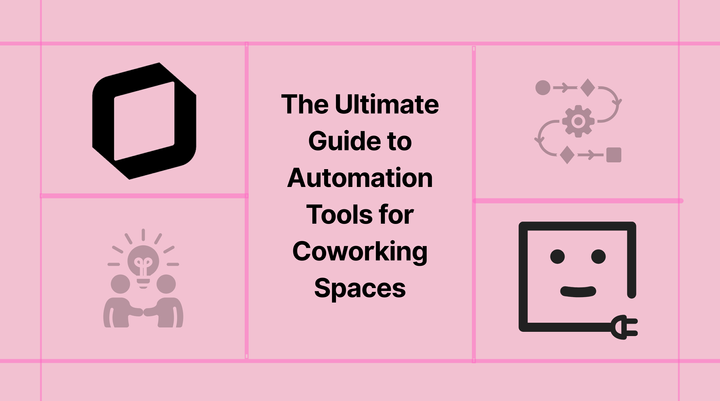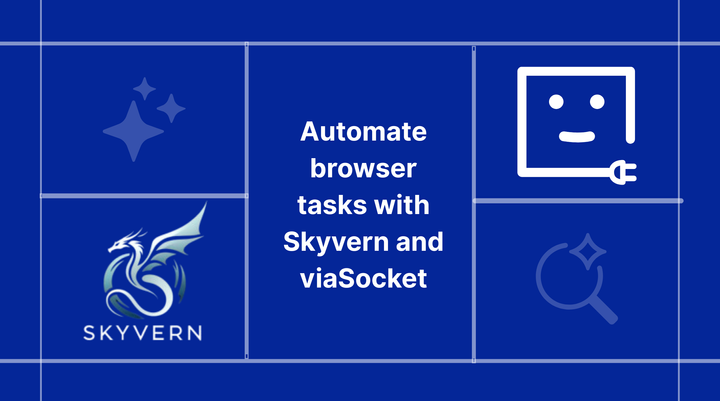Reducing Common Xero Mistakes: viaSocket Automations to Eliminate Reconciliation Errors

For most growing businesses, Xero has become one of the most dependable accounting solutions. It simplifies bookkeeping, streamlines transaction entries, and ensures decision-makers always have financial clarity at their fingertips. Yet, despite its robust capabilities, one recurring challenge continues to frustrate finance teams and business owners alike—reconciliation errors. Missed transactions, duplicated records, and mismatched data from banking feeds often create inconsistencies in financial reports, leading to endless backtracking and manual investigations.
This is where the power of automation comes into play. By setting up error-proof flows between Xero and banking applications through viaSocket, businesses can significantly reduce reconciliation mistakes, strengthen accuracy, and save hours of manual effort. Instead of firefighting reporting discrepancies after they occur, automation provides the mechanisms to prevent them in the first place.
Why Reconciliation Errors in Xero Happen
For small and medium-sized businesses, the majority of reconciliation challenges stem from three primary issues:
- Bank data mismatches: Inaccurate imports or unlinked accounts create gaps in transactions.
- Manual oversight: Incorrect categorization or missed entries build inconsistencies.
- Duplicate records: Payments logged in both Xero and the bank feed often inflate figures.
When these small slips add up, the integrity of monthly reports is compromised. Finance teams face the tedious task of reconciling line by line, a process that often delays compliance and impacts decision-making. Worse, without timely corrections, these issues can misrepresent profitability and cash flow health.
Automating Reconciliation Checks with ViaSocket
ViaSocket specializes in connecting SaaS platforms through intuitive automation flows. By integrating Xero with banking applications, the platform ensures that transactions are automatically synced, checked for duplicates, and categorized consistently. This eliminates the human errors that normally emerge from repetitive manual work.
For example, a business can configure viaSocket to fetch daily transaction data from its banking app and cross-check it against entries in Xero in real time. If an anomaly is detected—say, a duplicated transaction or an unrecorded expense—the workflow can automatically alert the designated finance team members. Instead of discovering these issues weeks later, businesses can fix them instantly.
Practical Scenarios Where Automation Eliminates Errors
- Realtime Bank Feed Syncs Without automation, bank feeds may lag, causing missed or late transaction imports into Xero. By using viaSocket to run scheduled syncs multiple times a day, businesses can guarantee every transaction is consistently available for reconciliation.
- Duplicate Transaction Prevention When entries are uploaded manually while also being pulled from bank integrations, duplicates occur. viaSocket automation flows automatically validate data before pushing it into Xero, ensuring no transaction is recorded twice.
- Expense Categorization Rules Misclassified transactions are a silent source of reporting discrepancies. With automation, businesses can define categorization rules once and ensure consistent labelling of vendor expenses, employee reimbursements, and recurring payments.
- Automated Error Alerts Instead of spotting discrepancies at the month-end close, viaSocket can flag mismatched or missing records as soon as they occur. This proactive alert system ensures finance teams don’t waste entire days correcting balances retrospectively.
The End of Manual Cross-Checking
Manual reconciliation is not only error-prone but also consumes valuable time that could otherwise be spent on strategy and analysis. Teams often sift through multiple data exports, highlight mismatches in spreadsheets, and re-enter data into Xero. Such repetitive work drains productivity and reduces focus on higher-value financial planning tasks.
With workflow automation, these repetitive processes are streamlined into self-correcting data loops. Instead of spreadsheets scattered across devices, businesses get a real-time, single source of accuracy between banking data and Xero records. The difference is immediate: reduced stress, improved compliance, and more reliable financial insights.
Beyond Error Reduction: The Larger Advantages
While the obvious purpose of viaSocket automations is to minimize reconciliation issues, the ripple effects go much deeper:
- Time Efficiency: Finance teams recover several working hours each week by cutting down on manual cross-checks.
- Data Accuracy: Better accuracy reduces risks in tax filings, audits, and executive reporting.
- Cost Savings: Duplicate or missed transaction corrections translate directly into reduced administrative overhead.
- Strategic Agility: With timely, accurate data, decision-makers can react faster to financial trends and liquidity issues.
This broader financial transparency is what truly defines the benefits of workflow automation. Rather than merely providing fixes to recurring challenges, it shifts businesses into a state of financial confidence and clarity.
A Future-Proof Integration Mindset
As businesses scale, the frequency of financial transactions grows exponentially. What starts small—like ten daily transactions—soon turns into hundreds. At this stage, without automation, reconciliation bottlenecks don’t just slow operations but can also put compliance and reporting accuracy at risk.
By adopting error-proof systems early with viaSocket, businesses can future-proof their operations. The platform doesn’t just stitch together Xero and a single bank feed—it enables integrations across multiple financial tools, payment processing apps, and treasury systems. This creates a scalable base where all data flows seamlessly, no matter how complex the financial ecosystem becomes.
Streamlining Financial Confidence
Every finance leader knows the frustration of discovering misbalanced books or unexplained discrepancies at the last minute. These repeated setbacks undermine trust in systems and consume more mental bandwidth than they should. By committing to automation-driven reconciliation, teams don’t just fix numbers; they transform their financial workflows into agile, accurate, and dependable systems.
viaSocket makes this transition simple. It doesn’t require writing code or deep technical expertise—just a clear understanding of the rules you want to enforce. Once set up, these automation flows run quietly in the background, ensuring entries and balances always stay aligned.
Wrapping It Up
For businesses using Xero, reconciliation errors are not a reflection of weak financial skills but rather of the limitations of manual processing. The smarter approach lies in embedding workflow automation directly into accounting operations. By leveraging viaSocket automations, businesses can eliminate duplicate entries, instantly detect mismatches, enforce categorization rules, and build total confidence in their data accuracy.
The shift isn’t just about saving time or avoiding pain points—it’s about creating financial systems that inspire trust, accuracy, and long-term scalability. In a competitive business world where every decision is measured, error-proof reconciliation is no longer a luxury but a necessity.



